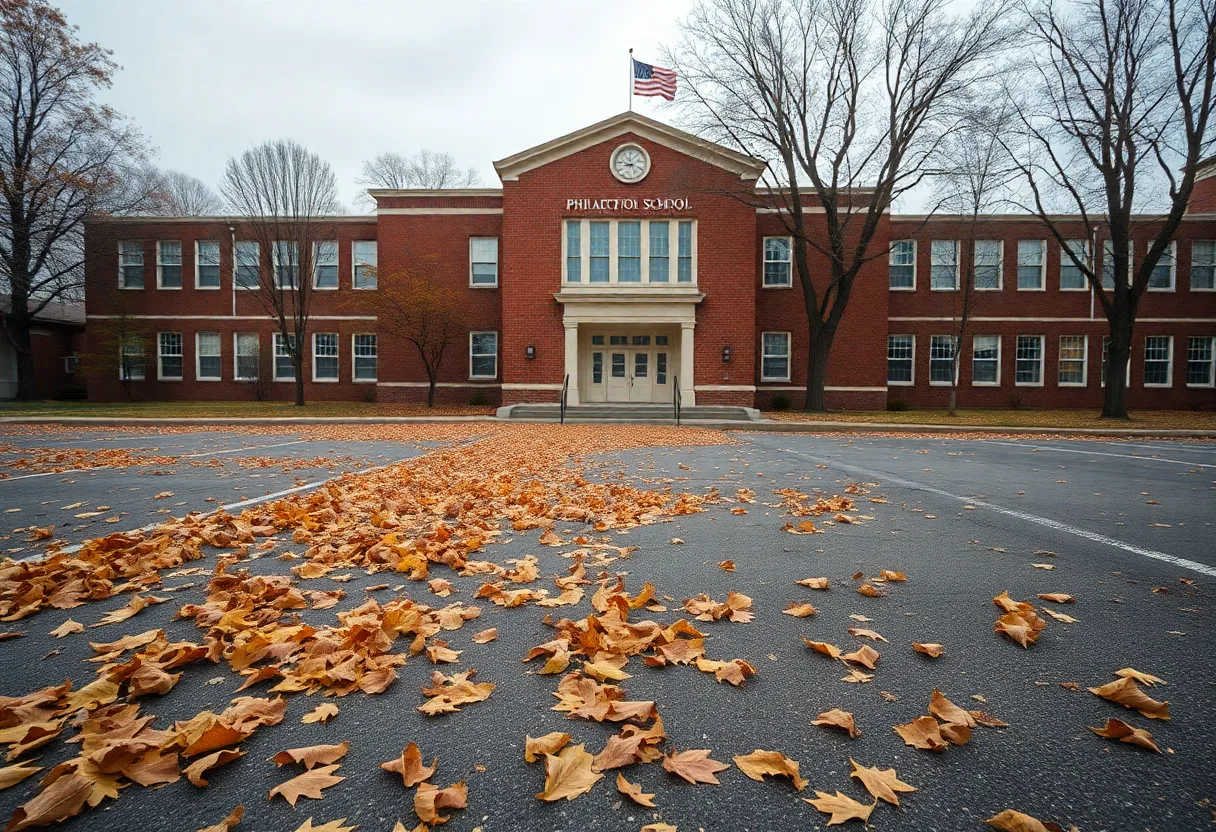Philadelphia’s Declining Public School Enrollment: Causes and Consequences
Overview of Enrollment Decline
Over the past decade, Philadelphia’s public school district has faced a persistent decline in student enrollment. Specifically, between 2019 and 2022, the district lost more than 12,000 students. This trend mirrors shifts occurring in numerous urban centers across the United States. The declining student population has prompted district officials to consider dramatic measures, including school closures, budget reallocations, and resource reallocation, to address financial sustainability and operational efficiency.
Causes of Enrollment Decline
Demographic Shifts
One of the most significant contributors to the decline is demographic change, notably the phenomenon often termed the “enrollment cliff.” This refers to a projected decrease in high school graduates starting around 2025. The root cause lies in declining birth rates, a consequence linked to economic uncertainty following the 2008 recession. Fewer children are being born, which translates into a smaller cohort of students entering the education system. The peak for high school graduates in the nation is expected to be approximately 3.9 million in 2025, after which numbers are expected to decline gradually. Such demographic trends are not unique to Philadelphia but impact numerous urban centers nationwide, creating systemic challenges for public school districts.
Migration Patterns
Changes in where families choose to live significantly influence enrollment figures. Many families are relocating from city centers to suburban areas seeking better housing conditions and perceived higher-quality educational opportunities. This migration reduces the number of students enrolled in Philadelphia schools. Additionally, the COVID-19 pandemic has altered parental preferences, with some parents opting for private or charter schools, further decreasing public school enrollment figures. Such shifts accelerate the decline by diverting students and funding away from traditional district-run schools.
Economic Factors
Economic conditions play a crucial role. Factors such as rising housing costs, unemployment, and financial instability directly influence family decisions regarding education choices. Families facing economic pressures may find it challenging to afford transportation or other associated costs of attending district schools. These economic obstacles compel some families to seek alternatives closer to home or through private or charter schools, which often offer more flexible or specialized options. Such economic pressures contribute steadily to the district’s enrollment reductions.
Consequences of Declining Enrollment
Financial Implications
Decreased student enrollment has profound financial impacts. Funding for public schools is primarily determined by student counts. As enrollment shrinks, so does the district’s budget. This situation necessitates cuts to educational programs, staffing, and resources. Budget shortfalls are increasingly common, forcing district officials to make difficult decisions about prioritization and program cuts. The financial strain threatens the district’s ability to maintain quality and expand services.
Operational Challenges
Operational efficiency suffers when schools serve fewer students. Low enrollment leads to higher costs per pupil in terms of maintenance, staffing, and resource allocation. The district faces pressure to “rightsize” its infrastructure, which involves closing underpopulated schools to better align resources with current needs. These decisions involve complex negotiations with communities, often leading to resistance and protests. Managing such changes requires careful planning and community engagement to minimize disruptions and social upheaval.
Impact on Educational Quality
Enrollment declines threaten the quality of education. Smaller school populations may limit the variety of academic courses and extracurricular activities available. Fewer students reduce the diversity of peer interactions and extracurricular participation, which can impact engagement and overall academic achievement. Financial constraints may also lead to staff reductions, limiting essential services like counseling, special education, and enrichment programs. This combination diminishes the educational experience for students in affected schools.
Community and Social Effects
Schools are more than just educational institutions—they serve as community hubs. Declining enrollment and school closures can erode community stability, reduce social cohesion, and diminish access to vital services. When schools shut down, neighborhoods lose a focal point for social interaction and community support. Additionally, students displaced by closures often face longer commutes and difficulty adjusting to new environments, impacting their academic and social development. These effects contribute to a cycle of decline in neighborhood vitality and social cohesion.
Potential Solutions and Strategies
Community Engagement
Effective response to declining enrollment depends on active community participation. Engaging parents, students, local organizations, and community leaders helps craft solutions that meet local needs. Transparent communication and participatory decision-making increase community trust and facilitate smoother implementation of reforms, including school closures or program adjustments.
Program Diversification
Enhancing the appeal of public schools involves diversifying academic and extracurricular offerings. Schools might introduce specialized programs, STEM initiatives, arts, or language immersion to attract a broader student base. Incorporating innovative teaching methods and technology can cater to evolving student interests and improve educational outcomes. These strategies aim to retain current students and attract new families, counteracting enrollment decline.
Policy Reforms
Addressing root causes requires policy actions at local and state levels. These include revisiting funding models to ensure equitable resource distribution, fostering economic development to make urban environments more attractive, and supporting policies that bolster neighborhood stability. Broader reforms that promote economic growth and housing affordability directly influence family decisions regarding schooling.
Infrastructure Investment
Maintaining and upgrading school facilities is essential. Modern, safe, and resource-equipped buildings attract families and improve educational quality. Investment should focus on maintenance, technological infrastructure, and accessible amenities. Well-maintained facilities can boost community pride and serve as an incentive for families lingering in or relocating to urban neighborhoods.
Fostering Sustainable Growth
The challenges posed by enrollment declines are complex and multifaceted. Addressing them requires a coordinated approach that balances fiscal responsibility with educational excellence. Combining community-centered strategies, policy reforms, and infrastructure improvements will be key to stabilizing and revitalizing Philadelphia’s public schools.
Frequently Asked Questions
What are the main causes of declining enrollment in Philadelphia’s public schools?
The primary causes include demographic shifts such as decreasing birth rates, migration of families to suburban areas, and economic factors like rising living costs and unemployment, which influence educational choices.
How does declining enrollment affect school funding?
Funding is typically based on student population, so a decrease in enrollment results in lower revenue. This financial reduction often leads to cuts in programs, staffing, and resources, impacting educational quality.
What operational challenges do underpopulated schools face?
Operating schools with fewer students results in higher per-pupil costs and inefficiencies. Districts may need to close or consolidate schools, which involves community negotiations and potential social disruption.
What strategies can help address enrollment decline?
Strategies include community engagement, diversifying academic programs, policy reforms to promote economic growth, and investing in school infrastructure to enhance appeal and educational quality.
Key Features Comparison Chart
| Aspect | Description |
|---|---|
| Primary Causes | Demographic shifts, migration, economic challenges |
| Financial Impact | Reduced funding, program cuts, staffing reductions |
| Operational Challenges | School closures, higher per-pupil costs, resource management |
| Effects on Education Quality | Limited program diversity, staff shortages, reduced services |
| Community Impact | Loss of community hubs, displacement, social disconnection |
| Strategies | Community engagement, program diversification, policy reforms, infrastructure investments |
Author: STAFF HERE PHILADELPHIA WRITER
The PHILADELPHIA STAFF WRITER represents the experienced team at HEREPhiladelphia.com, your go-to source for actionable local news and information in Philadelphia, Philadelphia County, and beyond. Specializing in "news you can use," we cover essential topics like product reviews for personal and business needs, local business directories, politics, real estate trends, neighborhood insights, and state news affecting the area—with deep expertise drawn from years of dedicated reporting and strong community input, including local press releases and business updates. We deliver top reporting on high-value events such as Mummers Parade, Philadelphia Flower Show, and Thanksgiving Day Parade. Our coverage extends to key organizations like the Greater Philadelphia Chamber of Commerce and United Way of Greater Philadelphia, plus leading businesses in telecommunications, food services, and healthcare that power the local economy such as Comcast, Aramark, and Children's Hospital of Philadelphia. As part of the broader HERE network, we provide comprehensive, credible insights into Pennsylvania's dynamic landscape.





